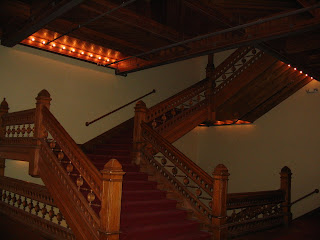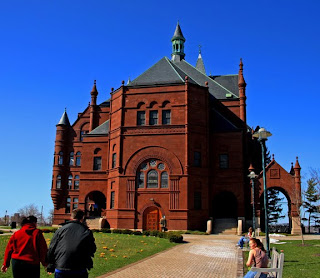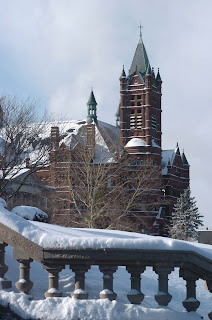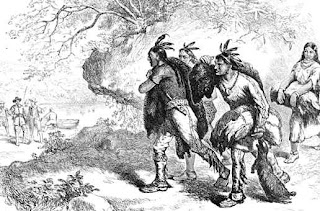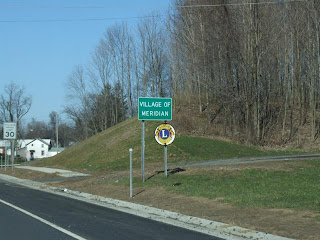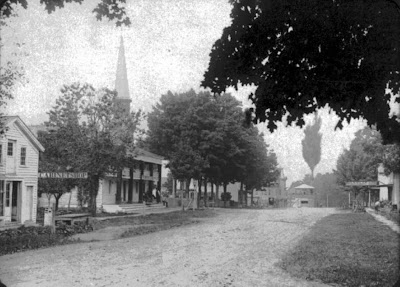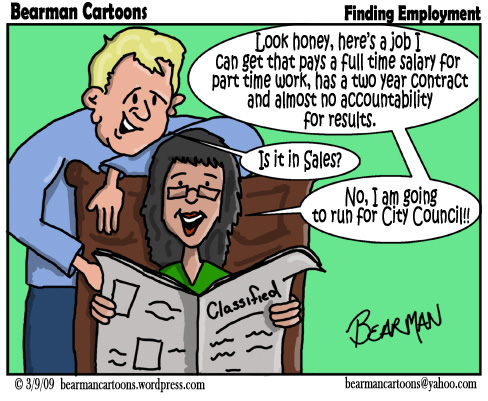Today's Cincinnati
Enquirer had two very interesting things in it today - a letter to the people of Cincinnati from a local restaurateur, Jeff Ruby, and an editorial that says a lot that has needed to be said. Here are both of them, for your edification:
_______________________________________
To the Great People of Cincinnati,
Our elected “leaders,” Harris, Thomas, Cole, Crowley and Qualls recently decided it was more important to spend $5 million to replace the windows at City Hall, than to keep the people safe who voted them into those offices and whose tax dollars are paying for those windows.
Shortly after learning that Over-the-Rhine was the most violent neighborhood in America, these city officials chose to lay off 138 police officers unless every officer accepted a pay cut. Unapologetically, these same five council members voted against taking pay cuts themselves. Councilman Thomas happens to be a former policeman – what a trooper. So, instead of providing funding for public safety, he and his colleagues chose to hire a tree trimmer and a climate control coordinator, and to spend $3 million on recycling containers and $1.5 million on sidewalks. Sidewalks? Who needs sidewalks when it’s too dangerous to go out for a walk?
After all of the positive action Mayor Mallory has taken to bring millions of dollars of assets to our city, isn’t it counterproductive not to also protect those assets?
The irresponsible spending of the “Furlough Five” has jeopardized the safety of the very people they promised to protect by providing safer neighborhoods. We as a city might be better served to abide by the tenants [sic] of many well managed companies whose foremost responsibility is “safety first.” At reelection time, remember that these “public servants,” who were elected to serve the public’s best interests, have a different priority: “WINDOWS FIRST”!
Wishing you a happy and safe 2009 holiday season,
Jeff Ruby
______________________
City Council math: 9 - 4 = Dysfunction
Editorial: Your chance to change the equation starts Tuesday with early voting
Cincinnati voters may assume that city policy is crafted by the mayor and the nine members of City Council they elect.
Unfortunately, they're only a little more than half-right. During 2009, Cincinnati in effect has had a five -member council on decisions that really matter.
• Tough calls await city - after election
The council majority, controlled by Mayor Mark Mallory, makes the key calls among themselves, often in a round-robin of private meetings that circumvent at least the spirit of laws intended to keep government decision-making open and public.
They cut off debate, twist council's own rules, hold items off the agenda then rush them to a vote without discussion. And if anyone steps out of line, the Democratic party and unions are there to bring down the hammer, as they did recently by un-endorsing Councilmember Jeff Berding.
The Favored Five includes Democrats Laketa Cole, David Crowley, Cecil Thomas and Greg Harris, along with nominal Charterite Roxanne Qualls.
The Forlorn Four - a multi-party mix of Republicans Leslie Ghiz and Chris Monzel, Charterite Chris Bortz and recently excommunicated Democrat Berding - can't get so much as a sniff at having a proposal considered or a discussion held.
"There's a fundamental difference between the two sides," Ghiz says, "and I don't know if it can be married up again."
Council's outward appearance as an efficient, smoothly running body under Mallory's watch contrasts favorably with the chaotic councils of past decades.
But the reality behind the scenes points more to dysfunctional control-freakery.
The Aug. 6 hearing on proposed police layoffs in which majority council members' questions - and reactions - were scripted in advance has come to symbolize this council.
"Everything is tightly scripted, designed to stop dissent," Berding says. "They use the rules to avoid discussion and controversies. It's almost pathological. But government is supposed to be about having disagreements, working through controversies openly and finding answers openly."
The current scheme is hardly representative democracy at its best. And it's up to city voters to correct that in this fall's election, which starts Tuesday when Ohio's early-voting season opens. With term-limited Crowley leaving council, there's an opportunity for the dynamics on council to improve.
"All I can hope for is the public gets smart and gives us a fifth vote," Ghiz says.
Or how about nine with the freedom to vote their consciences in the community's best interests? Nine independent-minded officials with the courage to stand up to the party bosses, unions and other interest groups?
Calling the question
To be fair, most of the routine matters council decides are handled through consensus. About 80 percent of council's roll-call votes this year have been unanimous or with token dissent. Nearly all council members support Mallory in his signature issue, the downtown streetcar proposal. "People are working together," Berding says.
And yet, the big items in 2009, generally those on budget-related matters, show a consistent 5-4 split, with the majority five controlling the agenda and stifling debate.
A pivotal moment came in December 2008 when Cole switched her expected vote on the city budget plan at the last minute, and the majority presented a different plan. "Then we had to vote on an alternate $1 billion budget without discussion - two minutes and it's 'call the question,'" Ghiz says. "Ridiculous."
The sense now is that Mallory has his loyal team and is ignoring the rest. The mayor has been heard making statements such as, "I have five votes; I can do whatever I want. I don't need the rest of you," according to members of the Flung-away Four.
"That's certainly not how he campaigned to be mayor," Berding says. Recently, the majority's treatment toward the dissenters has taken a more negative turn.
A letter from Crowley on behalf of Mallory and the five-member majority started the process that got Berding, a lifelong Democrat, kicked off the party's fall ticket after a Sept. 12 vote by the Cincinnati Democratic Committee for a "lack of party loyalty and integrity."
Berding says the charges that he was "giving aid and comfort to the enemy" were way out of line. "I've never called the mayor out on anything. In those situations, I've always just said I respectfully disagree with the majority," he says. "There's only nine of us. I'm not going to demonize Leslie (Ghiz) and Chris (Monzel) and oppose them at all costs just because of party labels."
No chaos, no dissent
Mallory came into office four years ago promising to "end the chaos" at City Hall and craft a more positive image for the city. To his credit, he has done much of that. The widely praised style he brought from the Ohio Statehouse relied on conciliatory, deal-making skills behind closed doors. But ultimately, it's translated poorly to governing in Cincinnati's awkward "stronger mayor" and council system - a system Mallory can't be blamed for.
"The mayor doesn't have true accountability," Bortz says. "He can say 'It's not my job, it's someone else's fault.' He has no real executive authority. He's like a super council member."
Somehow, it has morphed into a council-majority system that avoids controversy and squelches dissent.
What has changed? Key factors:
The economic downturn, and the budget crisis it brought to the city. Real problems started appearing in early summer, when the city's unrealistic tax revenue projections fell way short. Council was caught off guard. It shouldn't have been. Its reflex action has been to hunker down in an election year, underplay the problems, and delay and defer solutions. That requires tight control of the agenda.
"We've never been in a financial position like this, so council never got to this point before," Ghiz says.
Meanwhile, all the council members are in an unenviable spot, being whipsawed and pressured by outside groups - notably the Democratic party and the unions - that seek to control the outcomes, especially regarding city jobs and cutbacks.
"Council must have the spine to stand up against entrenched power," Harris says.
Earlier, council dynamics changed when Harris came on board in January, replacing Democrat John Cranley, who went into the private sector.
Cranley, a veteran council member, was a more independent swing vote with a strong base of support. He could afford to vote against the mayor's coalition on key issues. But Harris, a sincere, thoughtful neophyte, is vulnerable, with no real constituency. After a dressing-down by Mallory in front of other council members in May for teaming up with Ghiz to suggest using stimulus funds for blight abatement, Harris has pretty much stuck with Team Mallory.
Yet even Harris, like Berding, was whacked - with the blessing of Mallory and the Fab Five - for straying from the One True Path. His sin? Proposing that the city consider separating ambulance service from the fire department, an idea he says could "improve safety and save money" but could result in job reductions. His punishment? He lost the fire union's endorsement this month, and an e-mail blast against Harris went out to 3,000 people.
Council is reaping what it has sown over the past decade or more - overspending during the boom '90s, expanding and adding programs while underfunding the city's pension system. Now it faces a projected $40 million deficit for 2010, and will have nowhere to hide when budget time comes in December - conveniently, after the election. "It's the result of 10 years of bad decision-making," Bortz says. "If we had a structurally balanced budget, we wouldn't be looking at this kind of problem."
A matter of philosophy
The nature of what Ghiz calls the "fundamental difference" between the Frustrated Four and the High-Flying Five has been portrayed in various ways:
Bortz would say it's the difference between being willing to make tough decisions and just putting them off or papering them over. "We have serious budget issues, yet we continue to sweep it under the rug," he says.
Others would say it's the gap between fiscal conservatives, who believe the city should focus on essentials such as public safety, and liberals who believe the city must offer a wider range of services to its citizens.
But the most intriguing notion comes from Ghiz herself, who notes the four in the minority all have jobs in the private sector. "We know what it's like in the real world these days," she says. "We see what's happening. They have no clue."
However it breaks down, the bottom line is that Cincinnatians are getting only 5/9ths of the council they're voting - and paying - for.
Even worse, the taxpaying public, along with the Unfortunate Four, are being cut out of the discussion on crucial city policy.
"This is completely contrary to transparency in government and people should be outraged by it," Ghiz says.
She's right. Cincinnatians should ask tough questions. And they should vote accordingly this fall - for a NINE-member City Council.



















